We spend all day squeezing through slots canyons and then on the way home stopped at the Devils Garden-definitely not a hike- more-so a place to explore and let kids and dogs run around a giant playground of hoodoos-it’s truly amazing.
The rock formations of the Escalante area have been designated the Escalante Member of Entrada Sandstone of the San Rafael Group by geologists, and were formed in the Middle Jurassic epoch (166 to 174 million years ago). The Straight Cliffs Formation of the Kaiparowits Plateau to the west of the Devils Garden were formed during the more recent Cretaceous period. Paleontologists are interested in the area because the rock formations were deposited when the dinosaurs roamed the Earth. Many dinosaur fossils and tracks have been discovered by scientists working within the boundaries of the GSENM.
Mano Arch—much thicker than Metate Arch—with several boulders lying under it and a large notch missing from the bottom of the arch. A distant hoodoo appears framed inside the arch’s notch.
Mano Arch. The natural arches and other formations were created, and continue to be shaped, by the natural processes of weathering and erosion. Some of the rock layers are composed of a harder caprock material which resists the effects of weathering and erosion. Those caprock layers will remain intact much longer than other less resistant layers which weather and erode away below and around them leaving behind the current arches and hoodoos. Cycles of heat and cold, precipitation, ice, wind and gravity all play a part in the creation of the formations.
Daily extreme temperature variations create fractures by repeated expansion and contraction of the rock in a process called thermal stress weathering. The thermal stresses can cause deep cracks that split the rock into separate pieces in an erosional process called thermal exfoliation. Precipitation causes dissolution of the fine crystalline grains that bind the larger particles together, which is known as chemical weathering. Freezing water expands in fractures making them wider and deeper in a process called frost weathering. Gravity exerts a constant downward force that creates new fractures and separates the formations along existing fractures in a process called stress relief exfoliation. High speed winds remove any loose grains from the formations and wind-borne particulates sandblast the surfaces making them smoother.
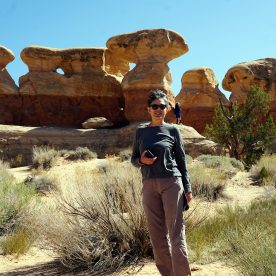
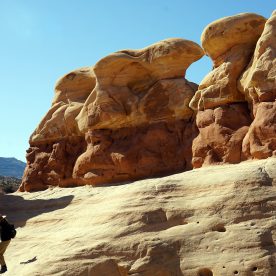
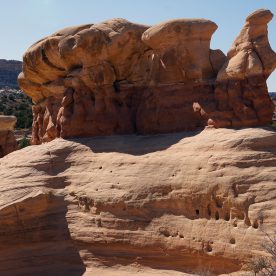
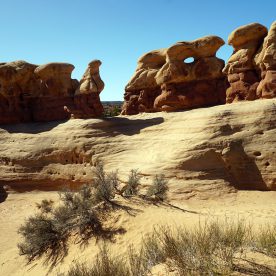
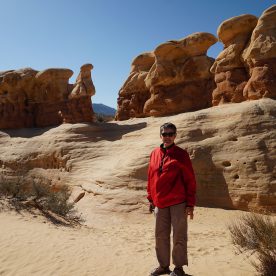
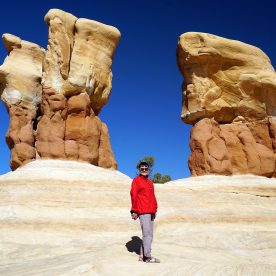
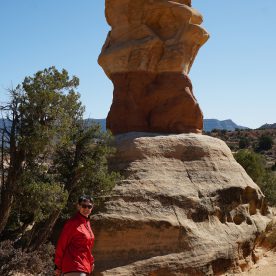
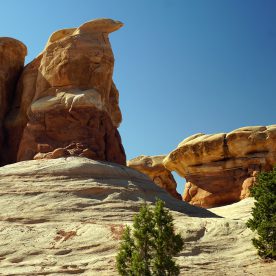
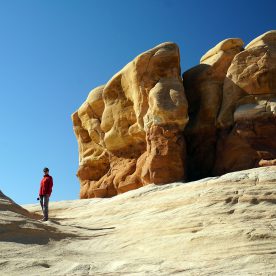
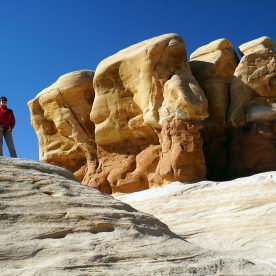
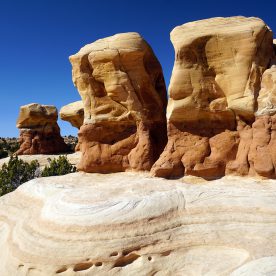
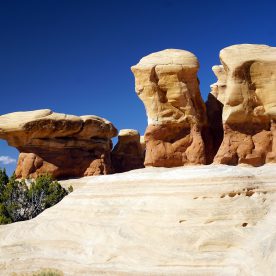
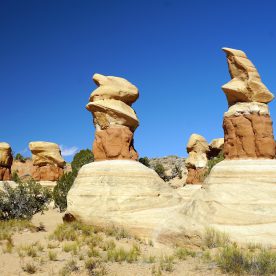
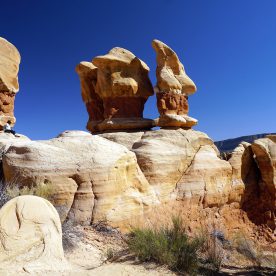
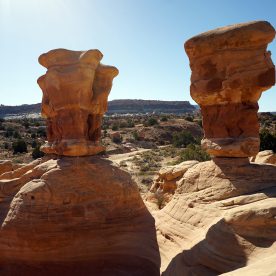
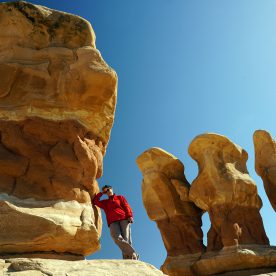
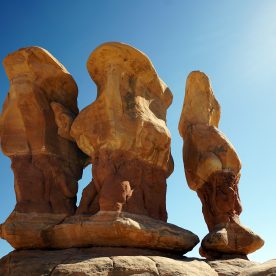
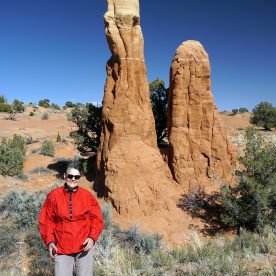
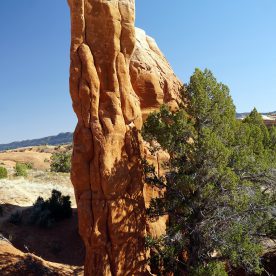
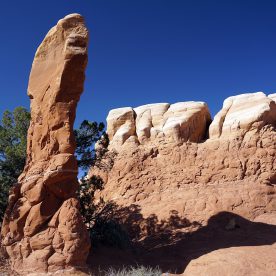
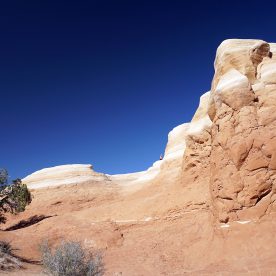
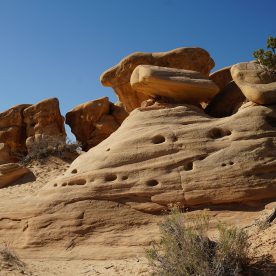
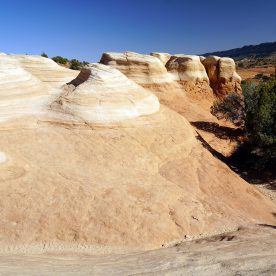
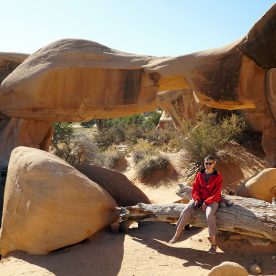
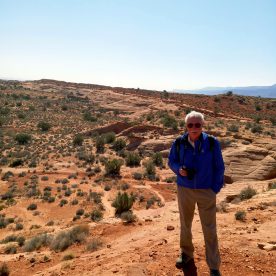
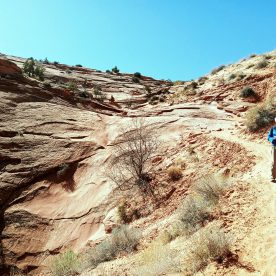
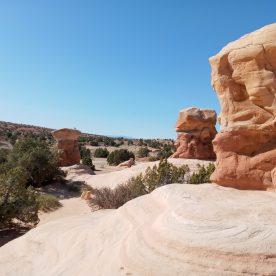
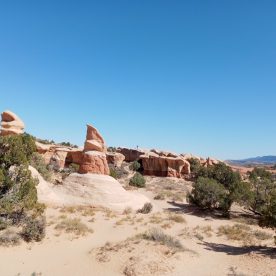
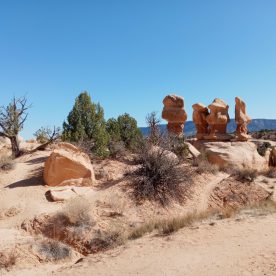
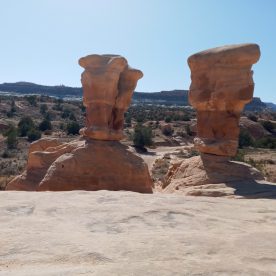
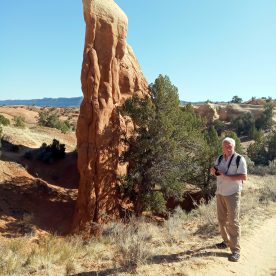
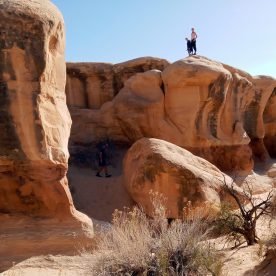
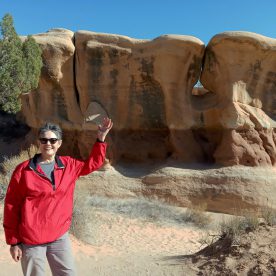
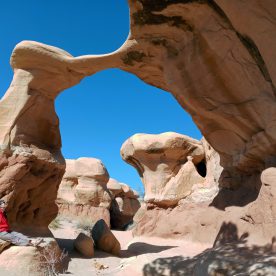
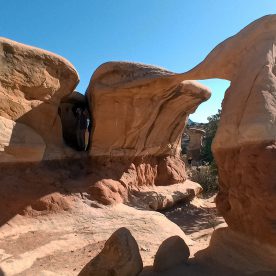
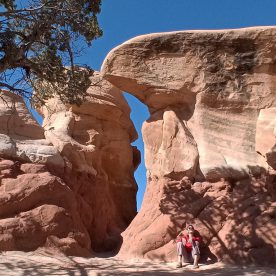
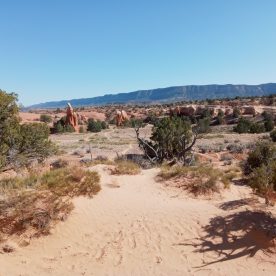
It is a real photo art. Congratulation.
BK